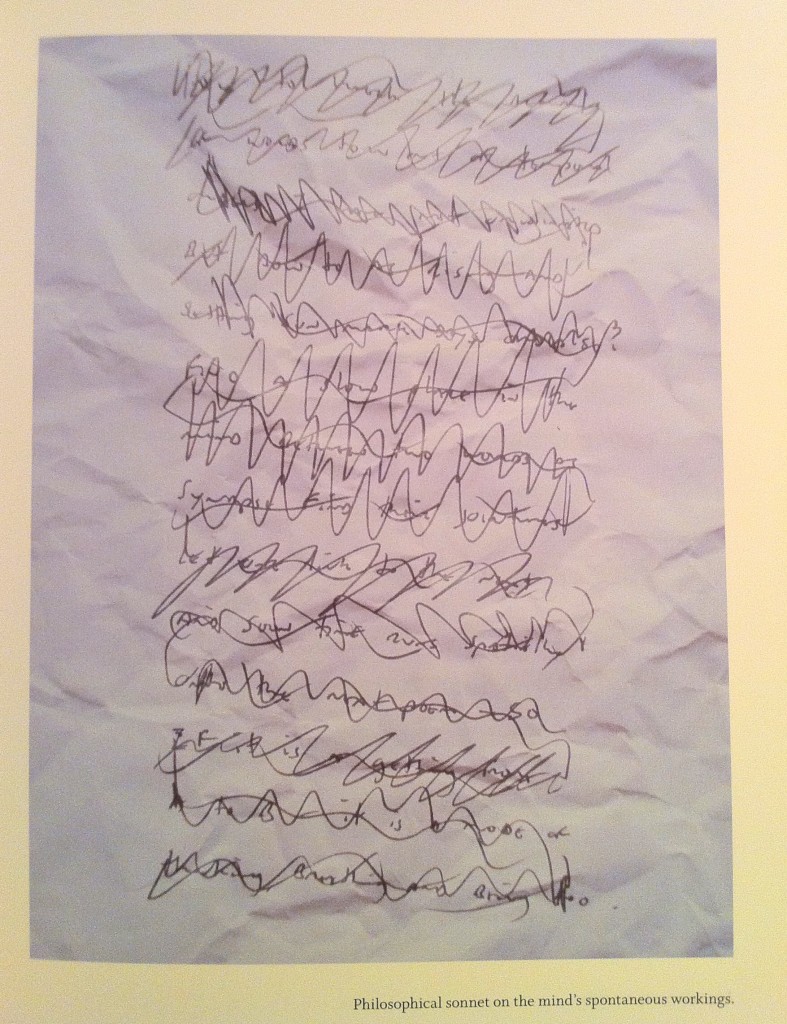365 Ruined Sonnets: Notes & Conversation with Stephen Collis
BY Sina Queyras

I was looking through an old issue of the excellent Capilano Review out of Vancouver recently and stumbled upon a series of ruined sonnets from Stephen Collis, a poet I mentioned briefly last year in a post about the sonnet. I was taken by his compressed sonnets, written under the heteronym of Alfred Noyes. This year it’s a sequence of sonnets that he wrote, and then prompltly destroyed.
In a statement attached to the "365 Sonnets I Destroyed" Collis says the idea came while he was between projects and wanted to try a daily practice. “The idea of sheer, un-productive practice attracted me--the idea of writing and destroying what you'd written, just to ‘get better,’ the arrogance, and preciousness of that, I took from Pound.” The sonnets are quite visually stunning, and well titled: "Sonnet expressive of the creative process (into which doubt creeps)," and "Sonnet in which ambitions are proclaimed (with ironic, self-mocking undertones)."
I also very much appreciate the idea of erasing one's steps and encourage students to throw out drafts—I know, I know, we’re supposed to save them all, but I disagree. A good poem is difficult to erase. A good poem will not go away. But more important, I like the practice as an antidote to the ego-bound world of contemporary poetry where everything is measured by nomination and publication (yes, there is a hierarchy of publication).
If one really wants to make a statement about the commodification of poetry, one might embrace the practice of erasing one’s steps. Get up in the morning and write a poem, then unwrite it… Though I noted that though Collis had destroyed the sonnet, he made the destruction part of the art too. I thought he would likely publish them too.
When I contacted Collis he was in agreement about the above sentiment. He notes that “like many ‘erasure’ practices, and Conceptual practices seemingly geared towards suppressing the (lyric) ego--the marshalling of structure and pattern ‘against expression’--somehow the ego/self slips back in the very gesture of saying, ‘see, I did this practice to erase myself. Come see me erasing myself!’”
Collis has become “interested in the friction of the surface where inside and outside meet, where whatever construct ‘I’ am and the materials ‘I’ find and use ‘outside’ myself come together to ‘compose.’” So he uses erasure, procedures, but he points out, he’s very impure about it:
I like the moment the structure of the ‘source’ and whatever I'm doing to it gives way to what we've naively described as ‘expression.’ The dialectic between the two. I can look back at my books and find the two practices mixing together and becoming indistinguishable.
And did Collis continue the sonnet practice? Did he make it to 365? And did he publish those ruined sonnets? Not quite.
I think this is crucial, and probably one reason why I stopped after about 65 of those 365 days. And this is a question about Conceptualism too: does it cease being ‘conceptual’ once you ‘make it’? Process became more interesting than recording the destruction of the pieces (and I was quickly running out of different or new ways to actually destroy and then photograph the remnants--after scribbling, liquid paper, tearing into pieces, crumpling, black marker, fire, burial, flushing down the toilet, etc. etc.--where do you go?). The other thing that happened is that the daily writing practice became ‘fruitful’ in a different way. I was in San Diego, and picked up a copy of Ted Berrigan's Sonnets, looking for ways to keep writing my own, and something clicked. I wrote a 16-line poem (4 quatrains). And then the next day I wrote another. Suddenly I stopped writing ‘365 Sonnets’ and started writing ‘4x4.’ So the work ‘you don't show anyone’ was replaced by work ‘I would show’ people. Still, the daily practice remained, and I wrote more than 80 ‘4x4’ poems, mostly on a daily basis, over the next few months (although only 44 would up in _On the Material_).
What is it about the sonnet, I asked Collis. Last year it was the condensed sonnets...here we get the ruined sonnets--what is it about the form that calls us back again and again?
The sonnet attracts, as far as I'm concerned, because of its incredible re-produceability. Sonnets almost always have come in ‘sequences’--really, it's the original serial form. You punch away at the machine, and a poem comes out, and then you can punch away at the machine, and another poem comes out, with very noticeable repetition and variation, and voila! We want to keep doing this for a while to see where it takes the thought/sound process, until it exhausts the sequences possibilities. You could also think of the sonnet as an ‘ecological niche’ we've adapted ourselves to as a species (poet, genus scriptor). It's been very fruitful for us, we know how to hunt there, so we keep going back. So what we need is an anthropology and an ecology of the sonnet. We just don't seem to be able to exhaust this ecosystem like we seem to do with others.
Are you finally finished with the form?
I guess I can't say that I'm ‘finished’ with the sonnet, but I think with "4x4" I realized it was the sequentiality, and the seriality of it that I found interesting (as well as bending the sonnet to contents it's not historically been used for--the supposed ‘thematic’ limits of the form are interesting too)--so I will keep working sequential series of smaller units. Sometimes they might take 14-line form.
Sina Queyras grew up on the road in western Canada and has since lived in Vancouver, Toronto, Montreal...
Read Full Biography

